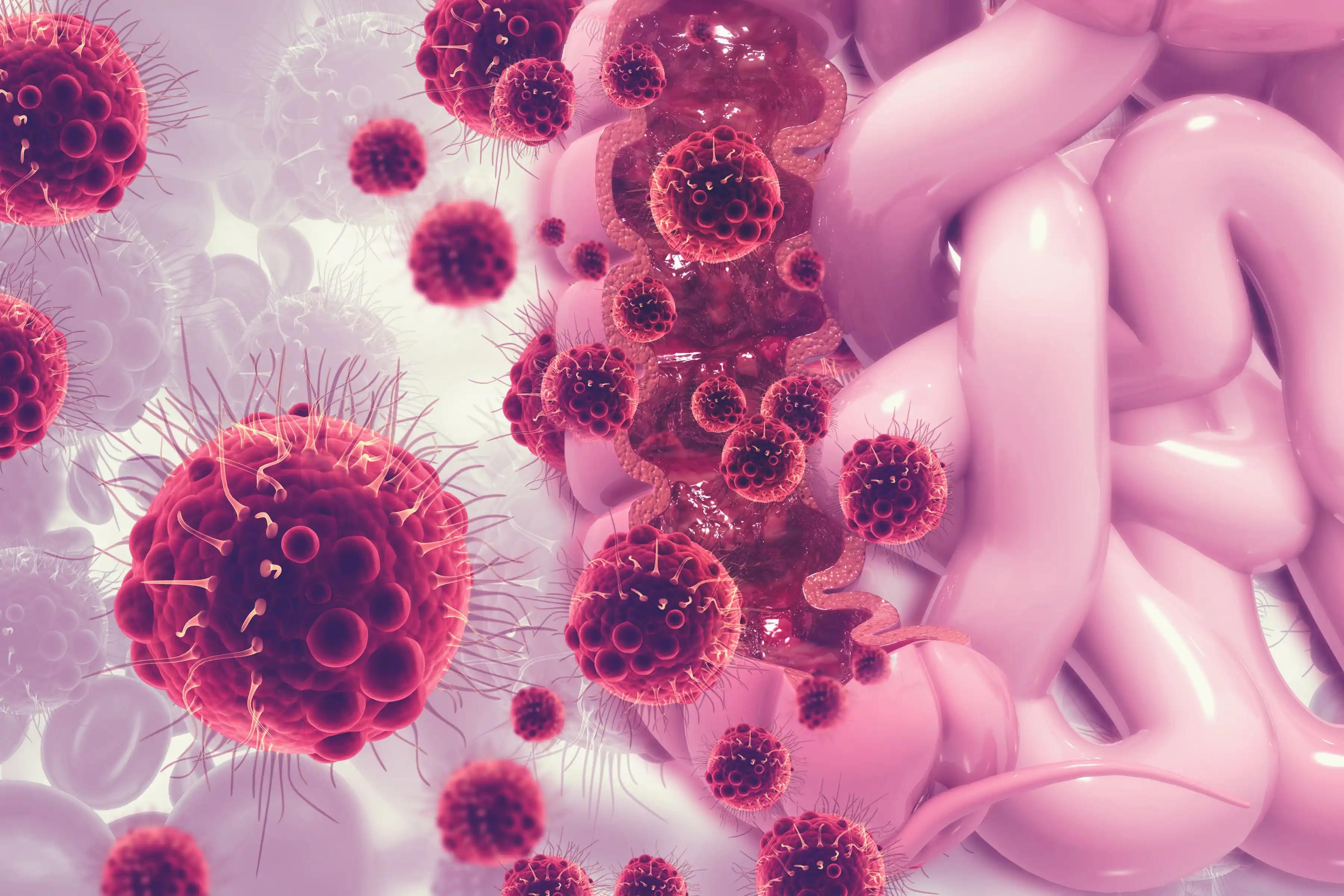KEY TAKEAWAYS
- The GIST phase I/II trial aimed to evaluate the safety, tolerability, and PK of THE-630 in advanced GIST pts.
- Pts received THE-630 once daily in a 3+3 dose-escalation design to assess safety, PK, and antitumor activity.
- The study found that THE-360 was well-tolerated, and dose-escalation is ongoing for pan-variant KIT activity.
Most gastrointestinal stromal tumor (GIST) patients (pts) have activating KITmutations, which can lead to resistance to imatinib and other tyrosine kinase inhibitors (TKIs). THE-630 is a pan-variant KIT inhibitor that is predicted to be effective against all major classes of KIT mutations.
Researchers aimed to evaluate the safety, tolerability, and pharmacokinetics (PK) of THE-630 in advanced GIST pts.
The phase 1 study included pts aged ≥18 with unresectable or metastatic GIST previously treated with imatinib and ≥1 additional TKI, received THE-630 (QD; 28-day cycles) in a 3+3 dose-escalation design. PK was assessed on days 1 and 15 in cycle 1, antitumor activity by modified RECIST 1.1, and ctDNA using Guardant360.
About 19 pts were treated with different daily doses of THE-630 in the phase 1 portion: 3 mg (n = 3), 4 mg (n = 7), 6 mg (n = 3), 9 mg (n = 3), and 12 mg (n = 3). Their median age was 57 (range 39–72), with 13 pts receiving four or more prior TKIs. The median treatment duration was 55 days (range 1–252). PK analysis showed an approximately dose-proportional increase in systemic exposure across the tested doses. The mean steady-state concentration (Cav) at 12 mg was 47 nM. One patient experienced a dose-limiting toxicity (DLT) at 4 mg, a grade 5 myocardial infarction.
This patient had a history of 8 prior TKIs and hyperlipidemia, and the relationship to THE-630 could not be incontrovertibly ruled out. No other DLTs or serious adverse events(AEs) related to the treatment occurred; 13 pts had treatment-related adverse events (TRAEs), with 91% being grade 1–2. The most common TRAEs included fatigue (n = 4), dry mouth (n = 3), anemia, ALT increase, AST increase, diarrhea, dyspepsia, dyspnea, and hypertension (n = 2 each). Reductions in certain KIT-mutant allele fractions in ctDNA were observed, consistent with achieved THE-630 levels. The best response was stable disease (SD) in 1/7 pts at 4 mg, 1/3 pts at 6 mg, and 3/3 pts at 9 mg. After the data cut, SD was observed in 3/3 pts at 12 mg. Dose escalation continues to determine the recommended phase 2 dose (RP2D).
The study found that THE-360 was well-tolerated, and dose-escalation is ongoing for pan-variant KIT activity.
Source: https://ascopubs.org/doi/abs/10.1200/JCO.2023.41.16_suppl.e23508
Clinical Trial: https://classic.clinicaltrials.gov/ct2/show/NCT05160168
Suzanne George, William D. Tap, Margaret von Mehren, Michael S. Gordon, Jonathan C. Trent, Steven Attia, Sen Zhang, Narayana Narasimhan, Victor M. Rivera, David Kerstein, and Michael C. Heinrich. DOI: 10.1200/JCO.2023.41.16_suppl.e23508 Journal of Clinical Oncology 41, no. 16_suppl (June 01, 2023) e23508-e23508.



